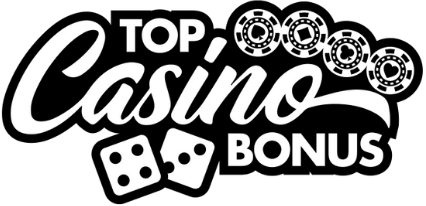American vs. European vs. French roulette: key differences
Roulette’s been around for a few centuries now, and I can’t count how many times I’ve seen folks dive into the game without realizing that not all wheels spin the same way. The differences between American, European, and French roulette aren’t just surface-deep, they shape how you play, and, more importantly, how you win. If you’re not tuning into these nuances from the get-go, you’re asking for trouble at the table.
Table of contents
Understanding the basics of the roulette table layout
All versions of roulette share the core idea: spin the wheel, drop the ball, and bet on where it’ll land. But the devil’s in the details, specifically in the number of pockets and how the game treats zeroes. The layout, odds, and house edge all shift depending on which variant you’re sitting down to play. So let’s break it down.
American roulette: the double-zero risk
The American wheel’s got 38 pockets, numbers 1 through 36, plus both a single zero (0) and a double zero (00). At a glance, it might seem like a small change, but that extra zero doubles the house edge compared to its European cousin, clocking in at a hefty 5.26%.
If you’re betting straight-up (on a single number), you’re still paid 35 to 1, same as in the other versions, but now you’re facing steeper odds (1 in 38 rather than 1 in 37). That’s the casino taking a bigger rake for each spin. It’s the equivalent of a craftsman trying to saw through steel with a dull blade, inefficient and more likely to backfire.
European roulette: the single-zero standard
Here’s the classic layout most folks think of when they hear roulette. This version trims the fat, 37 numbers including just one zero. This brings the house edge down to 2.70%, which might not sound like much on paper, but makes a world of difference over time. Trust me, I’ve seen hot streaks fizzle out purely because someone sat down at the wrong wheel.
If you’re just starting your journey with the game, you ought to get your bearings with a simplified setup. There’s a solid beginner’s roulette guide that covers the lingo and flow of gameplay without overwhelming you.
French roulette: the subtle advantage
Now we’re talking finesse. French roulette uses the same 37-number setup as European, but it introduces two vital rules, La Partage and En Prison, both of which lower your losses on even-money bets when the ball lands on zero.
La Partage means you get half your even-money bet back if zero hits. En Prison lets your bet carry over to the next spin. If it wins then, you’re whole again. These nuances bring the house edge on even bets down to about 1.35%, which is almost as low as you’ll find in any traditional casino game. But here’s the catch, not all casinos run French roulette with these rules, even if the layout says “French.”
Gameplay flow and betting philosophies
Most players miss the fact that the rhythm of the game changes with the variant. The American version, with its added zero, is faster-paced, more mechanical, less poetic. The French version? It’s like watching a master craft a violin, steady, deliberate, elegant. There’s a certain ceremony to the bets, with the croupier announcing results in French and betting types named with old-world flair.
Knowing when and where to use specific bet types, like “voisins du zéro” and “orphelins” in French roulette, gives you a layer of control players rarely tap into. It’s not just chance, it’s strategy sprinkled with pattern recognition and timing.
Odds and house edge comparison
Let me put it like this, if you’re a mechanic, you’d rather work with high-grade precision tools than slapdash, mass-produced stuff, right? Same goes for roulette:
- American roulette: 5.26% house edge
- European roulette: 2.70% house edge
- French roulette: 1.35% on even-money bets (with La Partage or En Prison)
If I had a chip for every player who learned this difference too late, I’d have filled a few vaults. Choose your battlefield wisely.
Software providers and where these games show up
Another oversight many make? Assuming all online roulette is equal. The software developers behind these tables affect everything, from realism and animation smoothness to rules enforcement. Some of the top dogs in this space deserve mentioning.
The authority of NetEnt in European tables
If you’re stickin’ to single-zero tables, then NetEnt roulette software delivers clean graphics with true-to-life physics. I particularly appreciate their attention to keeping the table dynamics authentic. No gimmicks. Just a reliable tool in capable hands.
Microgaming’s versatile wheel offerings
With Microgaming roulette, you’ll find both American and European formats. Their platform’s been time-tested, and while they sometimes over-polish their interfaces, they do give seasoned players options to toggle bet history, change table limits, or simulate streak patterns.
IGT’s classic approach to gameplay
Don’t sleep on IGT-powered roulette, particularly if you’re nostalgic for the casino floors of Atlantic City. Their American wheel is textbook, simple elegance, clearly marked and true to tradition.
Merkur Gaming’s European heartbeat
German precision shows up clearly in Merkur’s roulette games. Their European wheel implementations are gold dust, the timing of the spin, the balance of automated assistance and manual freedom, all nailed to the fretboard like a luthier crafting a Stradivarius.
Betting strategy and table selection
Over the years, I’ve burned through and built back a bankroll more times than I can count, and one constant thread’s always held true: strategy beats luck when paired with the right table. I don’t care how hot your streak feels, if you’re feeding the double-zero beast, your long game is doomed.
Always prioritize roulette types with a lower house edge. European should be the default; French if you’re sharp enough to handle the quirks and can find the right conditions. Leave American roulette for tourists and thrill-seekers who don’t mind higher risk for lower reward.
Closing thoughts: crafting your edge across variants
Mastery in roulette isn’t about shouting “red” and praying. It’s in the quiet discipline of choosing French over American, betting outside when variance is against you, and knowing the provider behind the screen. That’s the muscle memory built from playing the long game.
Cheat the random? Never. But you sure as hell can learn to ride it better than most. Remember, every wheel tells a story, whether it’s speaking French, rolling with a double-zero Texas drawl, or whispering in that pure European rhythm. Tune into it before you place your chips.





0 Comments